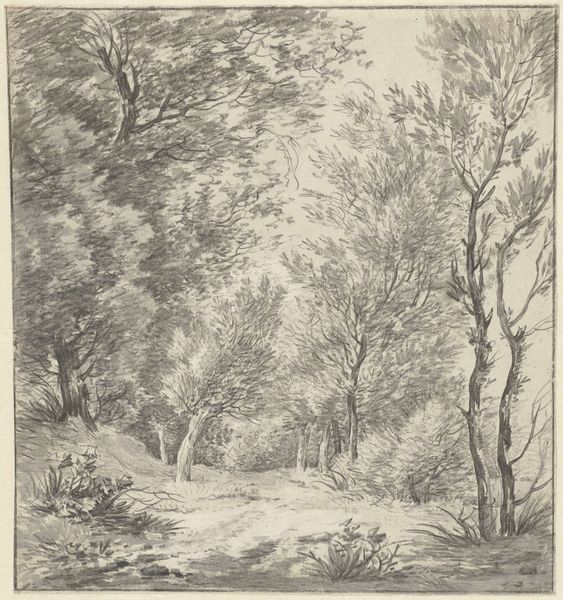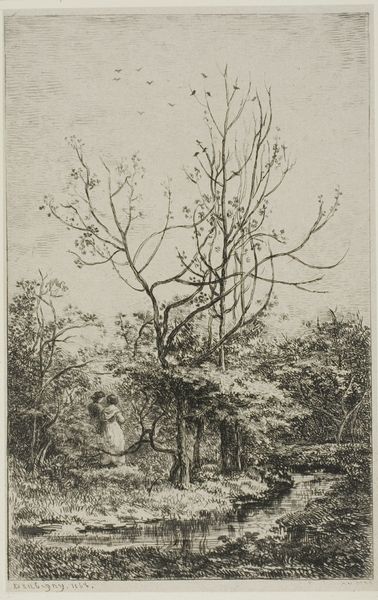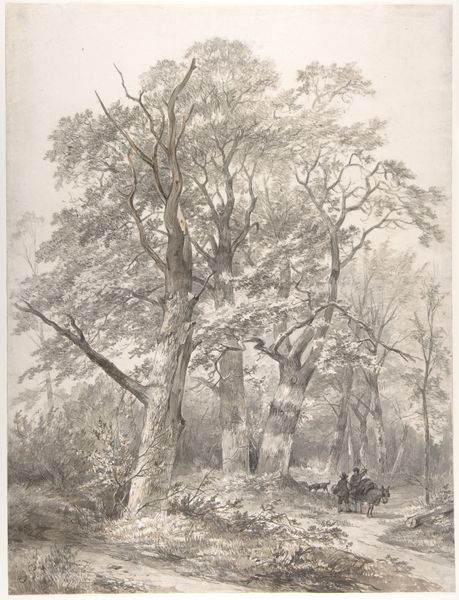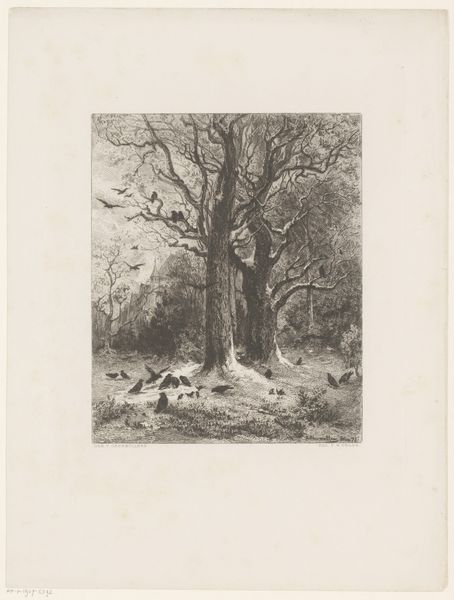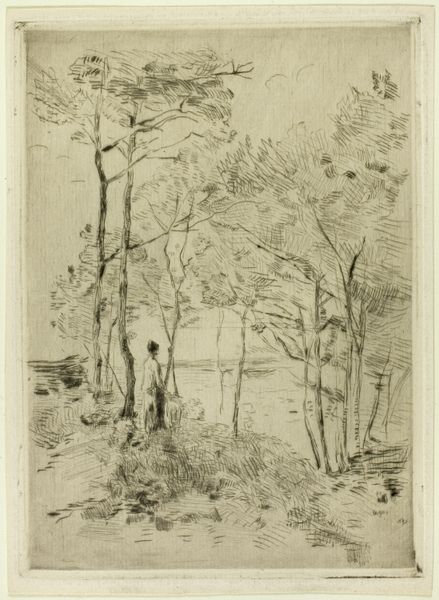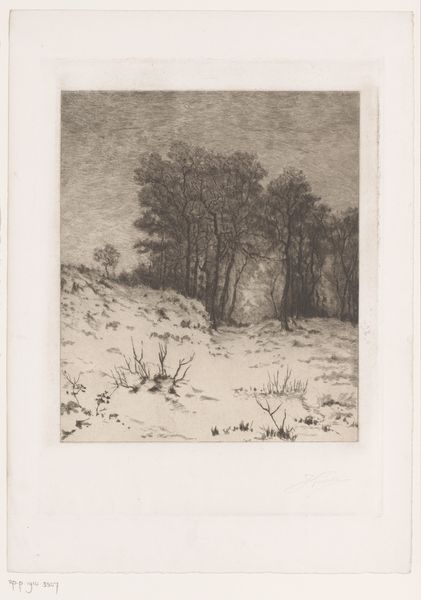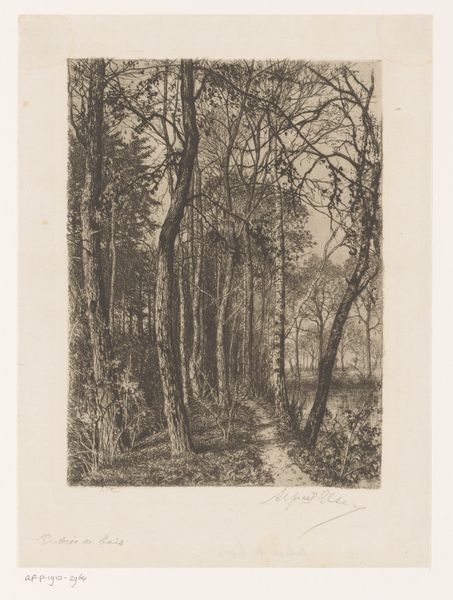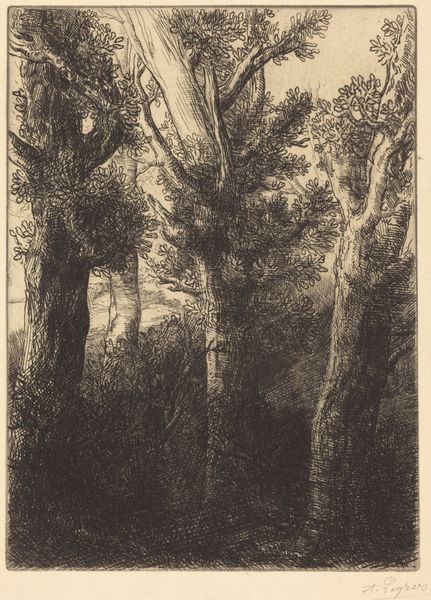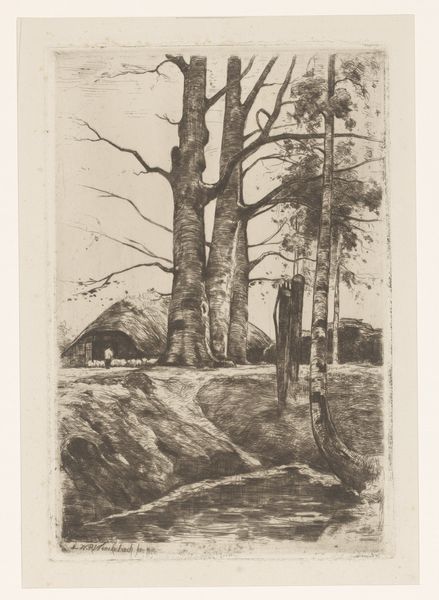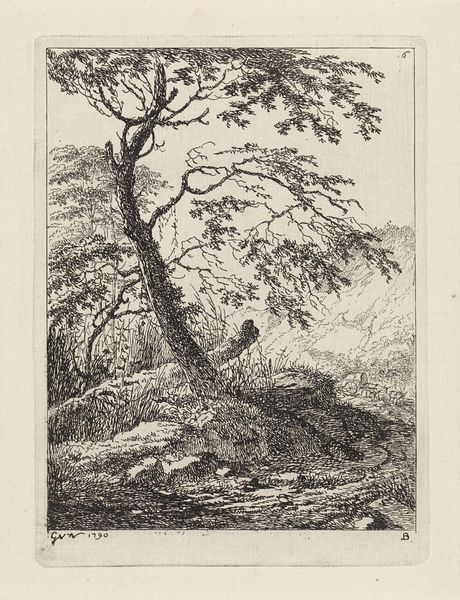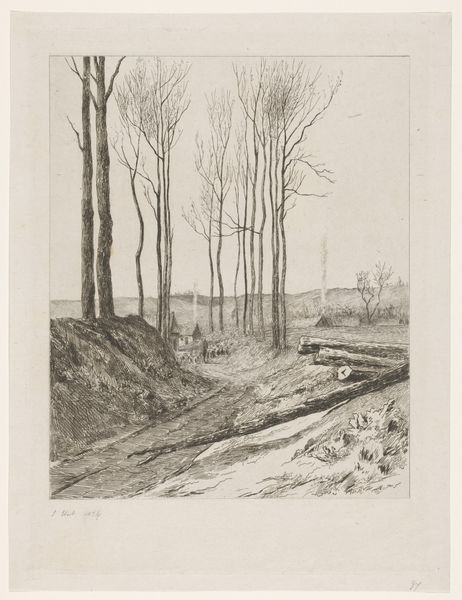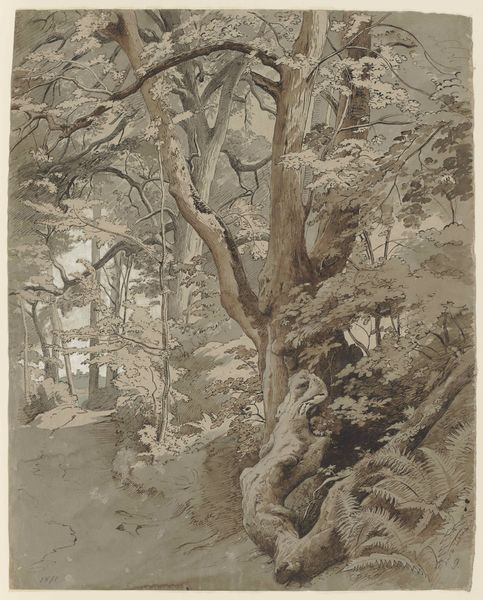
Dimensions: Sheet: 7 1/2 × 5 1/16 in. (19.1 × 12.9 cm)
Copyright: Public Domain
Curator: Let's explore Tancrède Abraham's "En Hiver," a landscape etched sometime between 1836 and 1895, now housed at the Metropolitan Museum of Art. It presents a bleak winter scene rendered with impressive detail. What's your initial take on this work? Editor: It strikes me as incredibly somber, almost desolate. The skeletal trees claw at the sky, and there’s a tangible stillness, a sense of suspended animation before the renewal of spring. There's something incredibly raw about that silence. Curator: Absolutely. The process of etching allows for these incredibly fine lines and cross-hatching to achieve nuanced tonality. The artist is using the copper plate to capture a moment in time. Consider how different choices in paper or the acid resist would change the print, perhaps even altering the emotional weight it carries. Editor: Speaking of process, how do you think Abraham engages with notions of class and access? Landscapes like these were popular among the bourgeois. Does he romanticize the hardships of rural life, or does he offer a more critical view? Curator: I would say neither and both at once, in many ways. These were artworks reproduced, bought and sold. This artwork would not look the same on canvas as it does through an etching technique; an emphasis on precision of labor becomes prevalent through the texture. However, while we admire its romanticism, consider that, for Abraham, winter landscapes were likely intertwined with complex narratives of migration, disenfranchisement, and class struggle. Editor: Yes, this artwork evokes the history of labor it embodies but also obscures a historical analysis with romanticist qualities. Still, I do see the artist grappling with ideas that trouble both traditional painting, drawing, and societal values of production by engaging an economy that both relies on and complicates artmaking. Curator: That’s well-put. His medium offers the chance of reproduction but doesn't overshadow the process; rather, it enhances how one reflects upon the content in relation to the act of image-making. It pushes you to ponder production and making by using art. Editor: I'd agree, and this opens up interesting pathways to consider broader sociopolitical issues during Abraham’s era that resonate even now, if we consider the contemporary relevance of class structure in art practices. Thank you for bringing this artwork to my attention. Curator: A fascinating perspective. Indeed, considering how labor intertwines with production invites reflections about value—material and otherwise. Thanks to your input, I have now gained new thoughts on “En Hiver".
Comments
No comments
Be the first to comment and join the conversation on the ultimate creative platform.

